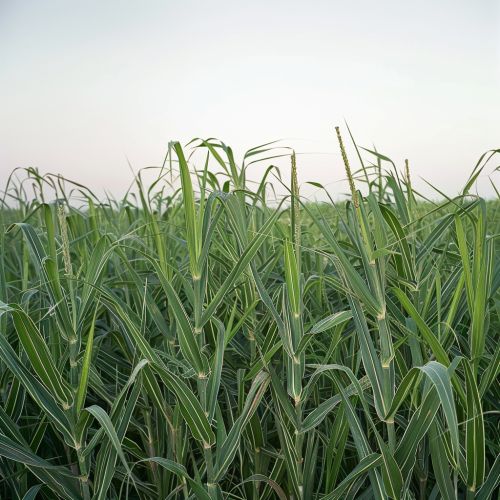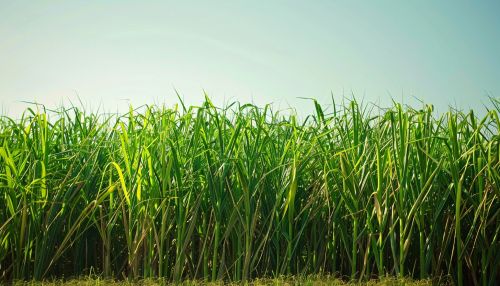Sugarcane
Introduction
Sugarcane, or Saccharum officinarum, is a tropical, perennial grass that forms the main source of sugar. The plant is native to warm temperate to tropical regions of India and is extensively cultivated in tropical climates worldwide. Sugarcane is a cash crop, but it is also used as livestock fodder.
History
Sugarcane has been cultivated in Asia for thousands of years. The earliest evidence of sugarcane cultivation dates back to 8000 B.C., found in New Guinea. From there, it spread to the Philippines and India, where it was first known to have been used to produce granulated, crystalline sugar around 500 B.C. Arab traders brought sugarcane to the Mediterranean region around 600 A.D., and it was further spread to the Americas by Christopher Columbus during his 1492 voyage.
Cultivation
Sugarcane cultivation requires a tropical or subtropical climate, with a minimum of 60 inches (150 cm) of annual moisture. It is one of the most efficient photosynthesizers in the plant kingdom. It is a C4 plant, able to convert up to 1% of incident solar energy into biomass. In prime growing regions, such as Brazil and India, sugarcane crops can produce over 15 kg of cane per square meter of sunshine.
Sugarcane is propagated primarily from stem cuttings, which are planted in well-prepared fields. The plants typically reach maturity in about 12 to 16 months, at which point they are harvested. In most countries, the crop is harvested mechanically, although in some parts, it is still cut by hand.
Processing
Once harvested, the sugarcane stalks are cut into segments and transported to a processing plant. There, they are washed and crushed to extract the sugarcane juice. This juice is then clarified, concentrated and crystallized to produce raw sugar. The raw sugar is further refined to produce white sugar.
The by-products of sugarcane processing include bagasse, a fibrous material left over after the juice has been extracted, and molasses, a thick, sweet syrup. Bagasse can be used as a biofuel or in the manufacture of paper and textiles, while molasses can be fermented to produce ethanol, a type of alcohol used as a biofuel and in the production of alcoholic beverages.
Economic Importance
Sugarcane is a major crop in many countries, including Brazil, India, China, Thailand, and the United States. It is the world's largest crop by production quantity, with 1.9 billion tons produced in 2016. The global value of the sugarcane crop is estimated to be over $70 billion.
In addition to sugar, products derived from sugarcane include falernum, molasses, rum, cachaça (a Brazilian alcohol), bagasse, and ethanol. In some countries, sugarcane juice is used as a popular drink, and raw sugarcane can be chewed to extract the juice.
Environmental Impact
While sugarcane production has economic benefits, it also has environmental impacts. These include the loss of habitat caused by the expansion of sugarcane cultivation areas, water pollution from the use of fertilizers and pesticides, and air pollution from the burning of sugarcane fields before harvest. However, sugarcane can also have positive environmental impacts, such as carbon sequestration and the production of biofuels.
See Also


